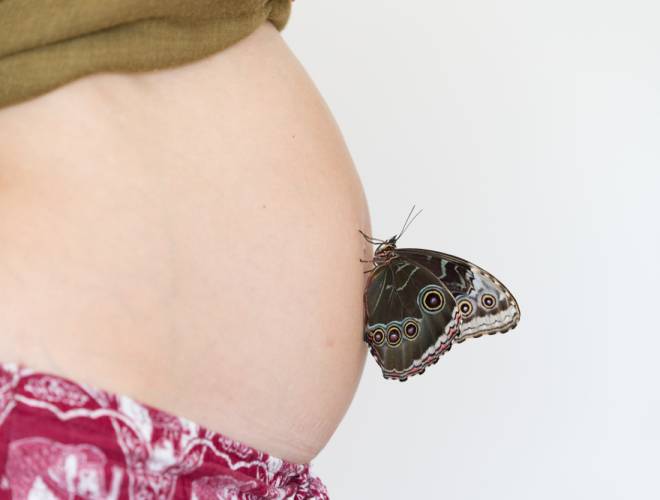
Celebrating World Hypnobirthing Day – 21 March 2023
I’ve talked about the medicalisation of a childbirth before. There is no denying that medical intervention has its place, and is sometimes very necessary. However, the large majority of the time, our bodies know what they need to do. Hypnobirthing harnesses the power of the mind over the body, to help this process unfold as it was intended.
Nowhere is the link between our mindset and the response of our body as evident as it is in childbirth, because the hormones produced by our brains have a direct correlation to our body’s ability to function.
If we go into birth with knowledge, not fear, and faith in our body’s ability to successfully give birth, we increase the chances of that exponentially. So let’s take a look at how Hypnobirthing can help ensure you take a calm, empowered, positive mindset into your birthing experience.
The History of Hypnobirthing
As far back as the 1920s Dr Grantley Dick-Read began to propose the idea of a ‘natural’ birth, which he wrote about in his 1942 book Childbirth Without Fear, where he discussed breaking the fear-tension-pain syndrome.
In 1989, as a result of her own birthing experiences, Marie Mongan founded the Hypnobirthing Institute, with the belief that:
“every woman has within her the power to call upon her natural maternal instinct to birth her babies in joy and comfort in a manner that most mirrors nature.”
In her book “Hypnobirthing – A Celebration of Life” Mongan laid out her ideas and techniques for birthing in a calm, relaxed and peaceful way.
What is Hypnobirthing?
While the name suggests hypnosis, this is only one aspect of hypnobirthing. In reality, the techniques used are all aimed at creating a calm and positive mindset, which results in physiological changes in the body to improve the experience of labour.
When we are fearful or anxious, not only do our bodies become tense, but our brains produce stress hormones like adrenaline and cortisol. These hormones can increase your perception of pain. Conversely, when we are calm and relaxed, our brains produce endorphins and oxytocin, which reduce pain perception and help move labour along.
Hypnobirthing techniques assist you in turning your attention inwards, allowing you to tune out peripheral activity and concentrate on the task at hand – calmly birthing a healthy baby.
Techniques
There are a range of techniques used in hypnobirthing. You may find some work better for you than others, or that certain techniques work at certain stages of labour. These techniques include:
- Breath management
- Self-hypnosis
- Massage
- Movement
- Deep relaxation techniques
- Acupressure
- Vocalisation & Visualisation
Benefits of Hypnobirthing – Here’s the Science…
There are lots of anecdotal and quantified studies on the benefits of Hypnobirthing. The WA Government recently conducted a pilot study, which they have since rolled out to more WA hospitals. The results included:
52% fewer caesareans
40% reduction in morphine use
32% reduction in epidurals
15% fewer inductions
In the US, where more studies have been conducted, a 2010 study found that:[i]
Hypnobirth General
Caesarean Rate 17% 32%
Required Analgesia <10% 22%
Had Epidural 20% 76%
Anecdotally, birth practitioners around the world have noted Hypnobirthing results in:
- Reduced rates of intervention and the need for pain relief
- Reduced rates of birth trauma and post-natal depression
- Shorter labours
- Higher Apgar scores*
- Faster post-birth recovery for both mum and bub
An additional benefit of using Hypnobirthing techniques is they provide your partner with an active, positive role to play in the birth process, helping them feel more involved and useful.
Pre & Post Natal
Hypnobirthing techniques can also be used both pre and post-natally. In fact, Catherine Middleton, Princess of Wales, who famously suffered from Hyperemesis Gravidarum (extreme ongoing morning sickness) during all three of her pregnancies, used hypnobirthing techniques to help her manage her condition, as well as during labour.
These same techniques are also showing signs of success when used postnatally to assist in recovery from a traumatic birth, and from mild postnatal depression and anxiety.
How Do I Have a Hypnobirth?
There are a wide range of Hypnobirthing courses on offer through hospitals, online or in person. Hospital run courses are often very basic, and are generally aligned with hospital protocol. Private courses are more comprehensive and provide more in-depth birthing options. My personal favourites are:
Hypnobirthingaustralia.com.au
Calmbirth.com.au
Shebirths.com
If you would like to know more about how Hypnobirthing can help you achieve a calm, positive and empowered birth, I would love to chat. Give me a call on 0422 258 771. or contact me here.
*An Apgar Score is a scale on which the health of a newborn is evaluated, and it is taken at 1 and 5 minutes post-birth. It is a assessed over five criteria – skin colour, pulse, breathing, muscle tone and reflexes. Each criteria is scored out of 2, giving a maximum score of 10. A score of 7 or above is considered optimal.
[i] https://www.ncbi.nlm.nih.gov/pmc/articles/PMC4744344/#:~:text=HypnoBirthing%20(the%20Mongan%20Method)%20was,with%20Mongan's%20own%20childbirth%20experiences.